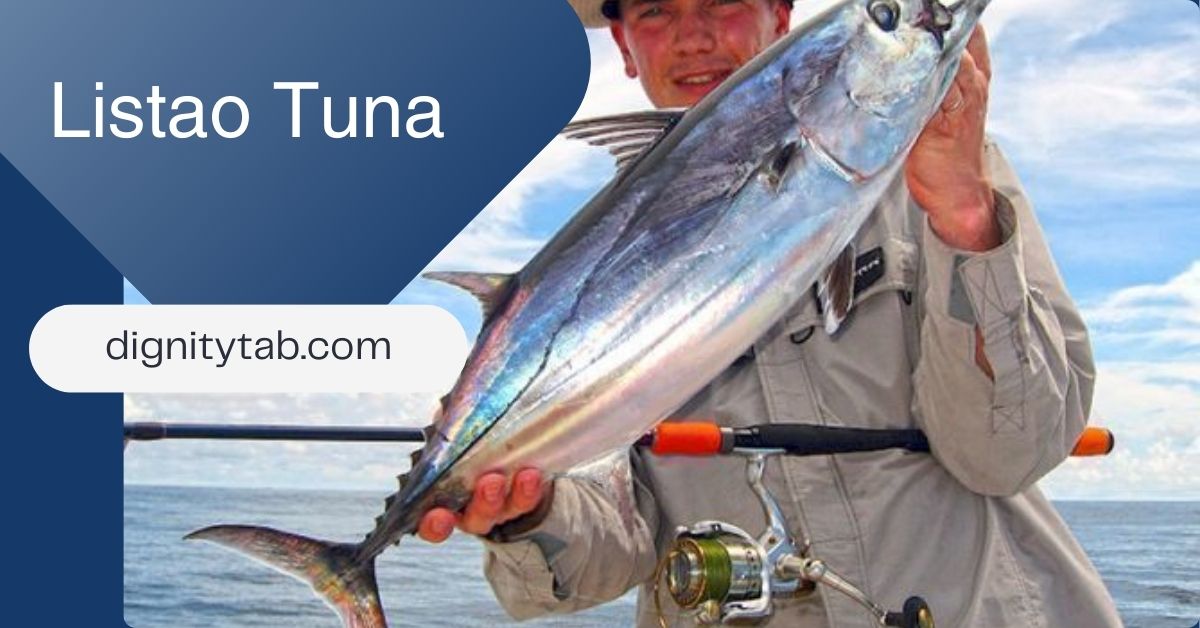When you hear the term “listao tuna,” you might not immediately recognize it, but this remarkable fish is better known as skipjack tuna. Its journey from the clear blue waters of the ocean to your pantry is fascinating and filled with intricate details that not only highlight its significance in the culinary world but also emphasize the importance of sustainable fishing practices. In this comprehensive guide, we’ll explore everything there is to know about listao tuna, from its biological characteristics to its culinary uses, and provide you with insights that go beyond existing sources.
What is Listao Tuna?
Biological Characteristics
Listao tuna, or skipjack tuna (Katsuwonus pelamis), belongs to the Scombridae family, which includes other tuna species. This fish is easily recognizable due to its sleek, torpedo-shaped body, which allows it to swim swiftly through the ocean.
Key Features:
- Color: The upper part of the body is a dark blue to blue-green color, while the belly is silver, which helps it blend into its surroundings in the ocean.
- Size: Listao tuna typically grows to about 24 to 30 inches in length, although some can reach lengths of up to 40 inches. They can weigh anywhere from 5 to 40 pounds.
- Habitat: This species is widely distributed in tropical and subtropical oceans worldwide. They prefer warm waters and are often found near the surface, where they feed on small fish, squid, and crustaceans.
The Journey of Listao Tuna
From the Ocean
The journey of listao tuna begins in the warm waters of the Pacific, Atlantic, and Indian Oceans. These fish migrate over vast distances in search of food and breeding grounds. Unlike some other tuna species, skipjack are known for their schooling behavior, often found in large groups.
Fishing Methods:
To catch listao tuna, various fishing methods are employed:
- Purse Seining: This is the most common method used for skipjack tuna. Large nets are used to encircle schools of tuna, trapping them for harvesting.
- Longlining: This method involves using a long line with baited hooks, attracting tuna as they swim by.
- Pole and Line: A more sustainable method where fishermen use a fishing pole with bait to catch one fish at a time.
To Your Pantry
Once harvested, the listao tuna undergoes several processing steps before it reaches your pantry.
- Processing: After being caught, the fish is quickly bled, gutted, and chilled to maintain freshness.
- Packaging: The processed fish is then canned, frozen, or packaged for sale in grocery stores.
- Distribution: Listao tuna is distributed to markets and grocery stores across the country, making it accessible to consumers.
Culinary Uses of Listao Tuna
Nutrition and Health Benefits
Listao tuna is not only delicious but also offers numerous health benefits.
- High in Protein: Tuna is an excellent source of high-quality protein, making it an ideal choice for muscle repair and growth.
- Omega-3 Fatty Acids: These essential fats are known for their heart health benefits and can help reduce inflammation in the body.
- Vitamins and Minerals: Listao tuna is rich in vitamins B12 and D, as well as essential minerals like selenium and phosphorus.
Cooking with Listao Tuna
Listao tuna is incredibly versatile in the kitchen. Here are some popular ways to enjoy this fish:
- Canned Tuna: A staple in many households, canned skipjack tuna is perfect for making sandwiches, salads, and casseroles.
- Grilled or Seared: Fresh skipjack tuna steaks can be grilled or seared for a delicious main dish. Simply season with salt, pepper, and a splash of lemon juice for a simple yet flavorful meal.
- Sushi and Sashimi: In Japanese cuisine, skipjack tuna is often used in sushi rolls or served as sashimi. Its mild flavor and firm texture make it a favorite among sushi lovers.
- Tuna Poke Bowls: This trendy dish features marinated raw tuna served over rice with various toppings like avocado, seaweed, and sesame seeds.
Recipes to Try
- Classic Tuna Salad
- Combine canned listao tuna with mayonnaise, diced celery, onions, and pickles. Serve on bread, crackers, or lettuce leaves for a refreshing meal.
- Grilled Listao Tuna Steaks
- Marinate tuna steaks in olive oil, soy sauce, and garlic. Grill for 3-4 minutes per side for a delicious and healthy dinner option.
- Tuna Poke Bowl
- Dice fresh listao tuna and marinate it in soy sauce, sesame oil, and green onions. Serve over sushi rice with avocado, cucumber, and seaweed for a nutritious meal.
Sustainability of Listao Tuna Fishing
Importance of Sustainable Practices
As demand for seafood continues to rise, sustainable fishing practices become increasingly important. Overfishing poses a significant threat to tuna populations, including skipjack. To ensure the future of listao tuna, it is crucial to support sustainable fishing initiatives and practices.
What to Look For
When purchasing listao tuna, consider the following to ensure you are making an environmentally responsible choice:
- Certification: Look for products certified by organizations like the Marine Stewardship Council (MSC) or the Aquaculture Stewardship Council (ASC), which ensure sustainable practices.
- Labels: Choose brands that clearly label their fishing methods, promoting transparency and responsibility in sourcing.
The Future of Listao Tuna
Research and Conservation Efforts
Researchers and conservationists are working diligently to protect tuna populations and their habitats. Efforts include monitoring fish stocks, establishing marine protected areas, and promoting sustainable fishing practices.
Consumer Awareness
As consumers, we can play a vital role in promoting sustainability by being informed about our seafood choices. Educating ourselves on the origins of the seafood we consume and supporting sustainable brands can make a significant impact on the industry.
Frequently Asked Questions (FAQs)
What is listao tuna?
Listao tuna, also known as skipjack tuna, is a species of tuna found in tropical and subtropical waters. It is known for its firm texture and mild flavor, making it a popular choice for various dishes.
Is listao tuna healthy?
Yes, listao tuna is a great source of protein and omega-3 fatty acids, along with vitamins and minerals that contribute to a healthy diet.
How should I cook listao tuna?
Listao tuna can be grilled, seared, or used in salads and sushi. Canned tuna is also widely used in sandwiches and casseroles.
What are sustainable fishing practices for listao tuna?
Sustainable practices include using methods like pole and line fishing, avoiding overfishing, and ensuring fish stocks are monitored and managed responsibly.
Where can I buy listao tuna?
You can find listao tuna in most grocery stores, either fresh or canned. Look for sustainably sourced brands to make environmentally friendly choices.
How can I tell if my tuna is sustainably sourced?
Look for certifications like the Marine Stewardship Council (MSC) or labels indicating responsible fishing practices on the packaging.
Can I eat listao tuna raw?
Yes, fresh listao tuna can be eaten raw in dishes like sushi and sashimi, but make sure it is sourced from a reputable supplier to ensure freshness and safety.
Conclusion
Listao tuna is more than just a tasty fish; it’s a vital part of our ocean ecosystems and culinary experiences. By understanding its journey, nutritional benefits, and sustainable fishing practices, you can appreciate this remarkable fish even more. Whether you enjoy it in a salad, sushi, or as a grilled steak, skipjack tuna is a delicious and nutritious option that supports a healthy lifestyle while encouraging sustainable practices. The next time you see “listao tuna” on a menu or in your pantry, you’ll know the incredible journey it has taken to reach you.
Embrace the flavors of the ocean and enjoy the benefits of listao tuna while being mindful of its sustainability for future generations.



